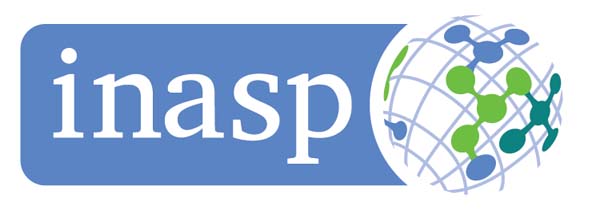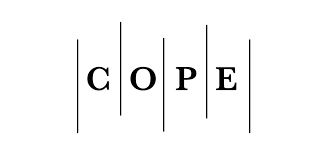A Survey of Transform Coding for High-Speed Audio Compression
DOI:
https://doi.org/10.29304/jqcm.2022.14.1.904Keywords:
Audio compression, Transform Coding, Entropy Coding, Wavelet Transform, WAV, MP3, DCTAbstract
The necessity for audio compression continues to be a critical issue., as it is associated with lowering the data capacity of one of the most widely distributed digital files transmitted between remote parties, audio compression remains a critical topic. The effectiveness of the two sound pressure units in this article has been tested. Because of this industry's importance,, which is reflected in storage capacity and transportation needs, Over the last two decades, sound pressure has been the topic of intense investigation. The rapid expansion of the computer industry is leading to a growing demand for high- quality audio data; As a result, the development of sound compression methods, of which there are two types: lossy and lossless, is critical. The purpose of this study is to explore sound compression techniques and to highlight the suitability and applications of each approach.
Downloads
References
[2] Hussain, Abir Jaafar, Ali Al-Fayadh, and Naeem Radi. "Image compression techniques: A survey in lossless and lossy algorithms." Neurocomputing 300 (2018): 44-69.
[3] K. Sayood, “Introduction to Data Compression”, Elsevier Inc (2006).
[4] H. Baker, “speeding -up fractal audio compression using double moments descriptor”, thesis, 2013.
[5] Wang, Jinzhen, Tong Liu, Qing Liu, Xubin He, Huizhang Luo, and Weiming He. "Compression ratio modeling and estimation across error bounds for lossy compression." IEEE Transactions on Parallel and Distributed Systems 31, no. 7 (2019): 1621-1635.
[6] Salau, A. O., Oluwafemi, I., Faleye, K. F., and Jain, S., "Audio Compression Using a Modified Discrete Cosine Transform with Temporal Auditory Masking," 2019 International Conference on Signal Processing and Communication (ICSC), NOIDA, India, 2019, pp. 135-142.
[7] L. A. Fitriya and T. W. Purboyo, "," International Journal of Applied Engineering Research, vol. 12, no. 19, p. 89, 2017
[8] Zohra Chelali, F., Cherabit, N., Djeradi, A., and Falek, L., "Wavelet transform for speech compression and Denoising," 2018 6th International Conference on Multimedia Computing and Systems (ICMCS), Rabat, Morocco, 2018, pp. 1-7.
[9] A. Tsegaye and G. Tariku, "Audio Compression Using DWT and RLE Techniques," American Journal of Electrical and Electronic Engineering, vol.7, no. 1, pp. 14-17, 2019.
[10] Abd-Elhafiez, W. M., Gharibi, W., and Heshmat, M., "An efficient color image compression technique," TELKOMNIKA Telecommunication, Computing, Electronics and Control, vol. 18, no. 4, p. 237, 2020.
[11] R. Mohammad and M. V. Kumar, “Audio compression using multiple transformation techniques,” International Journal of Computer Applications, vol. 86, no. 13, pp. 9-14, 2014.
[12] Z. T. Drweesh and L. E. George, “Audio compression using biorthogonal wavelet, modified run length, high shift encoding,” International Journal of Advanced Research in Computer Science and Software Engineering, vol. 4, no. 8, pp. 63-73, 2014.
[13] S. Bousselmi, N. Aloui, and A. Cherif, “DSP real- time implementation of an audio compression algorithm by using the fast hartley transform,” (IJACSA) International Journal of Advanced Computer Science and Applications, vol. 8, no. 4, pp. 472-477, 2017.
[14] Maithani S, Din M. Speech systems classification based on frequency of binary word features. In 2004 International Conference on signal processing and communications, 2004. SPCOM’04. 2004 Dec 11 (pp. 193–197). IEEE.
[15] Neyaz, Ashar, and Cihan Varol. "Audio Steganography via Cloud Services: Integrity Analysis of Hidden File." International Journal of Cyber-Security and Digital Forensics 7, no. 1 (2018): 80-87..
[16] Ware, Ryan. "File Extension Renaming and Signaturing." Digital Forensics (September 19, 2006) (2006).
[17] Kientzle, T., "Programmer’s guide to sound", Addison Wesley Developers Press, 1998. p 98.
[18] Decamro, L., "New Technologies for audio copy Protection", Electronic Media Article, 1999. [Dav00] Davern, P., and Scott, M. p 42.
[19] Janssens, Jelle; Stijn Vandaele; Tom Vander Beken (2009). "The Music Industry on (the) Line? Surviving Music Piracy in a Digital Era". European, Journal of Crime, Criminal Law and Criminal Justice. 77 (96): 77–96.
[20] Abou Haidar, Gaby, Roger Achkar, and Hasan Dourgham. "Quality Verification of Audio and Image Modulation by the Simulation of PCM, DM and DPCM Systems." International Journal of Information and Communication Sciences 3, no. 4 (2019): 110.
[21] P. Cummiskey, Nikil S. Jayant, and J. L. Flanagan, "Adaptive quantization in differential PCM coding of speech", Bell Syst. Tech. J., vol. 52, pp. 110—111, Sept. 1973
[22] Noura Qusay Ebraheem, Audio-Hiding System Using Wavelet and DCT Transforms, (2008), p 44.
[23] Wade, Graham (1994). Signal coding and processing (2 ed.). Cambridge University Press. p. 34. Retrieved 2011-12-22. The broad objective of source coding is to exploit or remove 'inefficient' redundancy in the PCM source and thereby achieve a reduction in the overall source rate R.
[24] Mahdi, O.A.; Mohammed, M.A.; Mohamed, A.J. (November 2012). "Implementing a Novel Approach an Convert Audio Compression to Text Coding via Hybrid Technique" (PDF). International Journal of Computer Science Issues. 9 (6, No. 3): 53–59. Retrieved 6 March 2013.
[25] Pujar, J.H.; Kadlaskar, L.M. (May 2010). "A New Lossless Method of Image Compression and Decompression Using Huffman Coding Techniques" (PDF). Journal of Theoretical and Applied Information Technology. 15 (1): 18–23.
[26] Tank, M.K. (2011). "Implementation of Lempel- ZIV algorithm for lossless compression using VHDL". Implementation of Limpel-Ziv algorithm for lossless compression using VHDL. Thinkquest 2010: Proceedings of the First International Conference on Contours of Computing Technology. Berlin: Springer. pp. 275–283.
[27] Navqi, Saud; Naqvi, R.; Riaz, R.A.; Siddiqui, F. (April 2011). "Optimized RTL design and implementation of LZW algorithm for high bandwidth applications" (PDF). Electrical Review. 2011 (4): 279–285.
[28] Stephen, Wolfram (2002). New Kind of Science. Champaign, IL. p. 106.
[29] Stanković, Radomir S.; Astola, Jaakko T. (2012). "Reminiscences of the Early Work in DCT: Interview with K.R. Rao" (PDF). Reprints from the Early Days of Information Sciences. Tampere International Center for Signal Processing. P.60. Archived (PDF) from the original on 30 December 2021. Retrieved 30 December 2021 – via ETHW.
[30] Britanak, Vladimir; Yip, Patrick C.; Rao, K. R. (6 November 2006). Discrete Cosine and Sine Transforms: General Properties, Fast Algorithms and Integer Approximations. Academic Press. ISBN 978- 0123736246. LCCN 2006931102. OCLC 220853454. OL 18495589M. S2CID 118873224.
[31] Thomson, Gavin; Shah, Athar (2017). "Introducing HEIF and HEVC" (PDF). Apple Inc. Retrieved 5 August 2019.
[32] Ahmed, Nasir; Natarajan, T. Raj; Rao, K.R. (1 January 1974). "Discrete Cosine Transform". IEEE Transactions on Computers. IEEE Computer Society. C-23 (1): 90–93.
[33] Rao, K. Ramamohan; Yip, Patrick C. (11 September 1990). Discrete Cosine Transform: Algorithms, Advantages, Applications. Signal, Image and Speech Processing. Academic Press. doi:10.1016/c2009-0-22279-3. ISBN 978- 0125802031. LCCN 89029800. OCLC 1008648293. OL 2207570M. S2CID 12270940.
[34] Barbero, M.; Hofmann, H.; Wells, N. D. (14 November 1991). "DCT source coding and current implementations for HDTV". EBU Technical Review. European Broadcasting Union (251): 22–33. Retrieved 4 November 2019.
[35] James, Jithin, and Vinod J. Thomas. "Audio compression using DCT and DWT techniques." Journal of Information Engineering and Applications 4, no. 4 (2014): 119-124.R. Crandall, Projects in Scientific Computation, Springer-Verlag, New York, 1994, pp. 197-198, 211- 212.
[36] Kaur, Harmanpreet, and Ramanpreet Kaur. "Speech compression and decompression using DWT and DCT." International Journal of Computer Technology and Applications 3, no. 4 (2012): 1501-1503.G. Kaiser, A Friendly Guide to Wavelets, Birkhauser, Boston, 1994, pp. 44-45.
[37] Patil, M. V., Apoorva Gupta, Ankita Varma, and Shikhar Salil. "Audio and speech compression using dct and dwt techniques." International Journal of Innovative Research in Science, Engineering and Technology 2, no. 5 (2013): 1712-1719.
[38] zohra Chelali, Fatma, Noureddine Cherabit, Amar Djeradi, and Leila Falek. "Wavelet transform for speech compression and denoising." In 2018 6th International Conference on Multimedia Computing and Systems (ICMCS), pp. 1-7. IEEE, 2018.
[39] Salau, Ayodeji Olalekan, Ifetayo Oluwafemi, Kehinde Felix Faleye, and Shruti Jain. "Audio compression using a modified discrete cosine transform with temporal auditory masking." In 2019 International Conference on Signal Processing and Communication (ICSC), pp. 135-142. IEEE, 2019.
[40] Tsegaye, Abebe, and Girma Tariku. "Audio Compression Using DWT and RLE Techniques." American Journal of Electrical and Electronic Engineering 7, no. 1 (2019): 14-17.
[41] Reddy, A. Pramod, and V. Vijayarajan. "Audio compression with multi-algorithm fusion and its impact in speech emotion recognition." International Journal of Speech Technology 23, no. 2 (2020): 277-285.
[42] Ahmed, Zainab J., Loay E. George, and Raad Ahmed Hadi. "Audio compression using transforms and high order entropy encoding." International Journal of Electrical & Computer Engineering (2088-8708) 11, no. 4 (2021).













